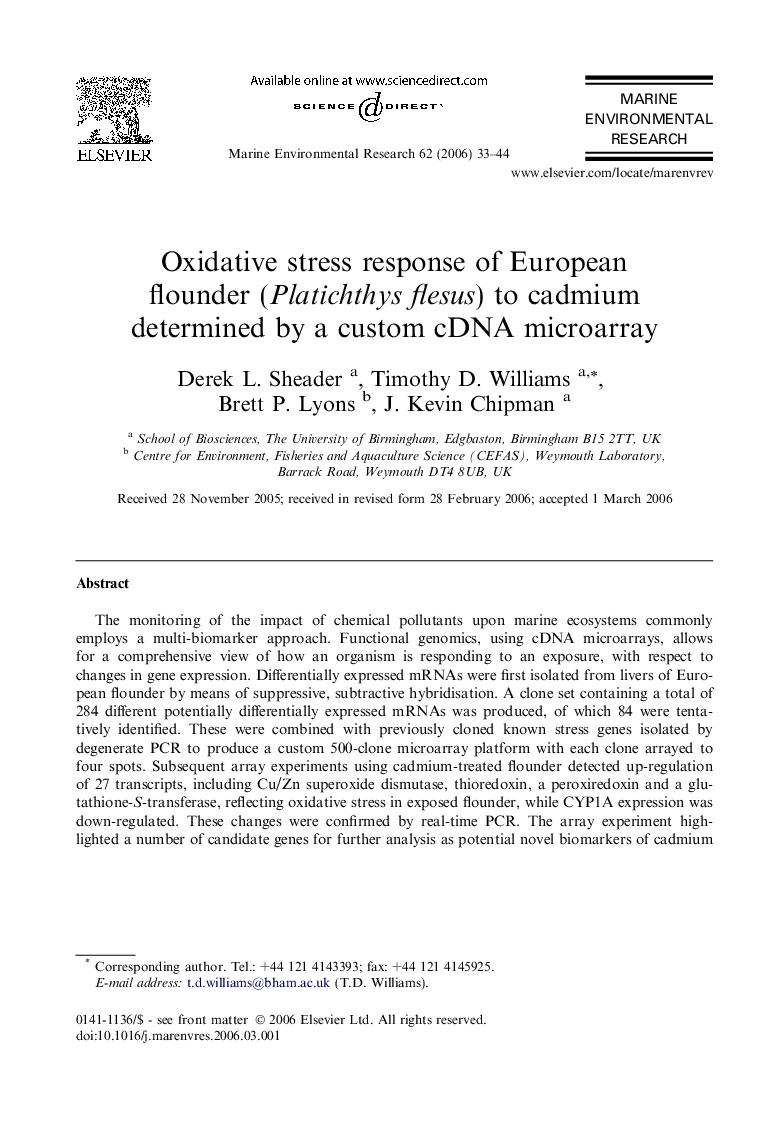| Article ID | Journal | Published Year | Pages | File Type |
|---|---|---|---|---|
| 4551924 | Marine Environmental Research | 2006 | 12 Pages |
The monitoring of the impact of chemical pollutants upon marine ecosystems commonly employs a multi-biomarker approach. Functional genomics, using cDNA microarrays, allows for a comprehensive view of how an organism is responding to an exposure, with respect to changes in gene expression. Differentially expressed mRNAs were first isolated from livers of European flounder by means of suppressive, subtractive hybridisation. A clone set containing a total of 284 different potentially differentially expressed mRNAs was produced, of which 84 were tentatively identified. These were combined with previously cloned known stress genes isolated by degenerate PCR to produce a custom 500-clone microarray platform with each clone arrayed to four spots. Subsequent array experiments using cadmium-treated flounder detected up-regulation of 27 transcripts, including Cu/Zn superoxide dismutase, thioredoxin, a peroxiredoxin and a glutathione-S-transferase, reflecting oxidative stress in exposed flounder, while CYP1A expression was down-regulated. These changes were confirmed by real-time PCR. The array experiment highlighted a number of candidate genes for further analysis as potential novel biomarkers of cadmium exposure and demonstrated the applicability of the custom microarray approach in the study of the effects of toxicants.
